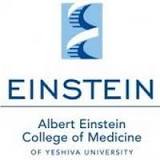Role of Enhanced External Counterpulsation (EECP) Therapy in Patients With Resistant Hypertension
| Status: | Archived |
|---|---|
| Conditions: | High Blood Pressure (Hypertension) |
| Therapuetic Areas: | Cardiology / Vascular Diseases |
| Healthy: | No |
| Age Range: | Any |
| Updated: | 7/1/2011 |
| Start Date: | May 2009 |
| End Date: | May 2010 |
Role of EECP Therapy in Patients With Resistant Hypertension
High Blood Pressure or Hypertension is one of the main causes of stroke, heart disease,
heart attack and kidney disease. Traditionally physicians use diet and lifestyles change and
medications to control patient's blood pressure. There are however, some patients whose
blood pressures are difficult to control and their blood pressure remains elevated despite
multiple medications. When blood pressure remains above goal (greater then 140/90 or greater
then 130/80 mmHg in patients with diabetes or kidney disease) despite 3 or more blood
pressure medications, the investigators call it "Resistant Hypertension".
Enhanced External Counterpulsation (EECP) is a new method of treatment currently used in
people with heart disease and chest pain. EECP therapy uses three sets of balloon like
cuffs that are wrapped to the calves, lower thighs, and upper thighs. These cuffs inflate
and deflate with every heart beat, causing increased blood return to the heart and better
blood flow. It has also been found to improve the function of endothelial cells, a type of
cells that lines the wall of blood vessel through out the body which helps to regulate and
maintain blood pressure. This leads us to believe that EECP therapy, although not used at
present for treating patients with Resistant Hypertension, may be useful in decreasing blood
pressure.
Hypertension is a major cause and contributor to stroke, heart and kidney disease and could
worsen the progression as well. Despite major reductions in age-adjusted death rates from
coronary heart disease and stroke, these continue to be the leading and third most common
causes of death, respectively, in the United States. In particular, for every 20 mm Hg
increase in systolic blood pressure or 10 mm Hg in diastolic blood pressure, there is a
doubling of stroke and coronary artery disease death rates. Kidney Failure related to
hypertension continues to grow, especially among the African-American population.
Traditional approaches have mostly included pharmaceuticals targeting different mechanisms
that contribute to HTN. However, adequate control of Blood pressure continues to remain a
major problem.
Resistant hypertension is defined as blood pressure that remains above goal in spite of the
concurrent use of three antihypertensive agents of different classes. Ideally, one of the
three agents should be a diuretic and all agents should be prescribed at optimal dose
amounts. Patients whose blood pressure is controlled but require four or more medications to
do so should be considered resistant to treatment. The prevalence of resistant hypertension
is unknown. Cross- sectional studies and hypertension outcome studies suggest, however, that
it is not uncommon. In a recent analysis of National Health and Nutrition Examination Survey
(NHANES) participants being treated for hypertension, only 53% were controlled to <140/90 mm
Hg. In a cross-sectional analysis of Framingham Heart Study participants, only 48% of
treated participants were controlled to <140/90 mm Hg and less than 40% of elderly
participants (>75 years of age) were at a goal blood pressure.
The benefits of successful treatment, however, are likely substantial as suggested by
hypertension outcome studies in general and by the early Veterans Administration cooperative
studies, which demonstrated a 96% reduction in cardiovascular events over 18 months with use
of triple antihypertensive regimens compared with placebo in patients with severe
hypertension (diastolic blood pressure 115 to 129 mm Hg).
Furthermore, as age and obesity are the two most common risk factors for hypertension the
prevalence will likely increase as the patient population gets older and heavier. This
necessitates development of novel therapeutic approaches to blood pressure control.
Enhanced External Counterpulsation (EECP) is a non-invasive method currently used for the
treatment of ischemic coronary disease. During EECP therapy three compressive pneumatic
cuffs are wrapped to the calves, lower thighs, and upper thighs. The cuffs inflated
sequentially during diastole cause retrograde aortic flow, and increased venous return.
During end diastole, the cuffs rapidly deflate, resulting in unloading of the left ventricle
and a decrease in systolic blood pressure. In addition there is also evidence that EECP
improves endothelial function. Endothelial dysfunction with imbalance of vasodilatory and
vasoactive substance is thought to contribute to elevated blood pressure. This leads us
believe that EECP, although not used at present for patients with Resistant HTN, may
represent a novel, valuable and untapped therapy.
We propose to study the effect of EECP therapy on mean ambulatory blood pressure and
noninvasive hemodynamics in subjects with Resistant HTN. We will measure subjects'
ambulatory blood pressure and noninvasive hemodynamics parameters at baseline, 4 weeks and 7
weeks. Subjects will undergo a 7 week course (35 sessions) of EECP therapy. Follow up
ambulatory BP and non invasive hemodynamic parameters will be measured to evaluate any
change in BP.
Our hypothesis is that in patients with Resistant HTN will demonstrate improved Blood
pressure after completion of 35 sessions of EECP therapy.
We found this trial at
1
site
Albert Einstein College of Medicine The Albert Einstein College of Medicine of Yeshiva University is...
Click here to add this to my saved trials
